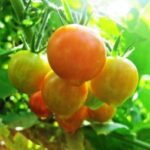how to grow plants from seed
Aren’t they supposed to do this on their own? Yes, they are, but you get much better quality plants and a whole lot more of them if you follow these tips.
Start at the end of February, beginning of March. Get a few seed starting kits: they are arrays of little growing pods (36, 72 or 144) with transparent lids. I can tell you from experience that this closed systems maintains high levels of humidity and will make your seeds germinate in one or two days instead of a week. Don’t keep the lid on after the little plants have sprouted, it encourages mold. After taking the lids off you need to water the pods regularly to keep the soil moist but not soggy.
Once the seeds have germinated, prepare additional growing medium to transfer the extra seedlings. There should be no more than ONE plant per pod. Gently pull out the seedlings by the leaves, not the stems ( the plant will survive a torn leaf, but not a broken stem), tease them apart gently and replant each one separately. A teaspoon will work perfectly as a miniature trowel.
Very small seeds (snapdragons, nicotiana) can be difficult to control, in this case it is easier to just thin the plants until they have enough room to grow ( 1/2″ to 1″ apart).
Keep in mind that cucurbitae (cucumbers, squashes, melons) like to grow in “nests”. Plant several seeds in the same space and let them grow together. Training squashes to grow vertically on a net or a trellis will save you a lot of space and make them yield more fruit. Make sure to set up any supports you like to use before planting so that you don’t disturb the plants’ roots.
Don’t start tomatoes sooner than 4 to 6 weeks before outdoor transplanting. They will grow leggy and suffer from lack of nutrients in the small growing pods.
Scrape woody seeds (morning glory, nasturtiums, four-o-clocks, moon flower) with sandpaper or soak them in warm water overnight before planting. This greatly improves their germination rates.
Some plants really resent transplanting and are better off started directly outdoors after the danger of frost has passed. Among these, cucumbers, nasturtiums, sweet peas, peas and beans in general.
Later in spring set up a sunny spot to sow and forget hardy perennials. They may not come out the same year, but you will be pleasantly surprised when they finally sprout. The healthy and resilient plants they produce will grace your garden for many years.




 Previous Post
Previous Post Next Post
Next Post




